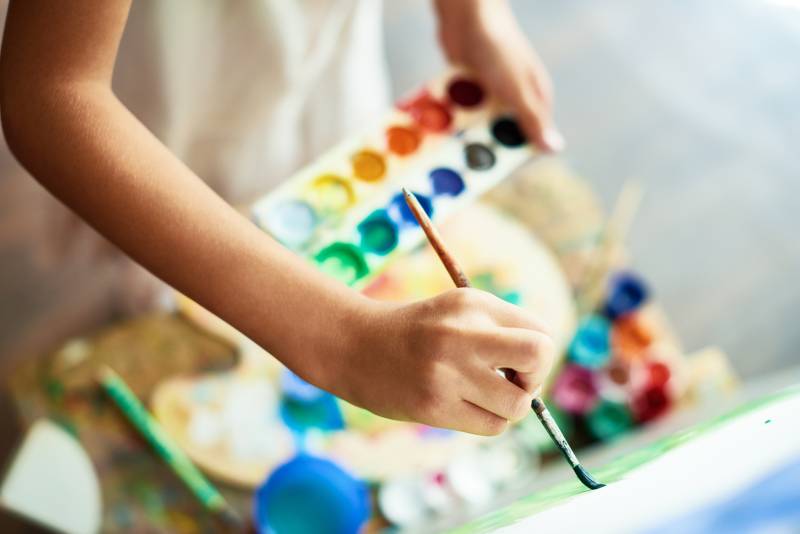The students in both groups were demographically similar: One quarter of the students were Black, two-thirds were Hispanic. More than 85 percent of their families were poor enough to qualify for free or reduced-price lunch. Of course, it wasn’t a blind test. The students knew they were getting art and there was no placebo, but it’s as close as you get to a pharmaceutical drug trial in education.
The arts programming itself ranged a lot. Sometimes artists visited the schools and taught a series of weekly lessons in dance or theater. Other times students went on field trips to museums where art educators explained paintings and sculptures. Sometimes it was a one-off symphony performance with a discussion afterward.
Results
After at least a year of this artistic potpourri, the academic performance of students in math, reading and science was no different for those who got more art. Their state test scores were neither better nor worse than students who didn’t get art. To the researchers, that was good news.
“Schools that are struggling in math and reading are worried about where they can make space in the schedule to squeeze art in. They worry that math and reading is going to get worse if we add the arts,” said Daniel Bowen, an associate professor at Texas A&M University and one of the study’s co-authors. “That didn’t happen.”
While art won’t ruin math scores, the researchers found that art led to improvements in student behavior and other social-emotional skills that students need.
Disciplinary infractions were 3.6 percentage points lower among students who had more art exposure, according to the study, Investigating the Causal Effects of Arts Education, which published online in the Journal of Policy Analysis and Management in November 2022. In the schools without art, 14.5 percent of students were disciplined compared to only 10.9 percent of students in the schools with art. The researchers also detected an increase in students’ compassion for others, or emotional empathy, based on student surveys. The surveys also found that elementary school students, who made up the majority of the students in the study, were more engaged in school and had stronger college aspirations.
During the study, the researchers conducted focus groups with principals, who said it was hard to make the case for art when they’re under pressure to raise math scores. This study, the researchers said, can help school leaders argue that the arts foster soft skills that can be just as, if not more, important than test scores to children’s futures.
“There’s good reason to believe that arts education just improves student engagement. It is something that can make learning more intriguing and fun and interesting. And that’s what we found,” said Brian Kisida, an assistant professor at Truman School of Government and Public Affairs at the University of Missouri, and the other co-author of the study.
That higher student engagement, however, didn’t translate into better school attendance. Absenteeism was similar for both groups of schools, with and without art.
The only academic benefit from art at all was in one aspect of writing, as measured by Texas state assessments. Students who’d received more art lessons exhibited stronger ideas and thoughts, but not writing mechanics, such as spelling or grammar.
Dose of Reality
I wondered if it was a disappointment not to see greater academic benefits from exposure to art. But the researchers emphatically said “no.”
Kisida explained that most of the academic claims made by arts proponents are “dubious.” Yes, students who take more art classes tend to be better students, but there is no proof that the arts are making them smarter.
“We don’t know if it’s the arts that are doing the heavy lifting there, or if it’s just that students who are interested in the arts or whose parents push them into the arts are also students who excel in other areas,” said Kisida.
This large randomized controlled trial of art proves that academic gains – at least in the short run – are unlikely. Kisida says that this is a healthy dose of reality for arts advocates.
To be sure, cognitive scientists and literacy experts believe that knowledge of the world is important for reading comprehension and critical thinking. One reason is because it’s easier to absorb a new reading passage if a student is already familiar with the topic. But it would likely take years of accumulated art knowledge – and dozens of museum visits and theater performances – to see reading comprehension improve.


